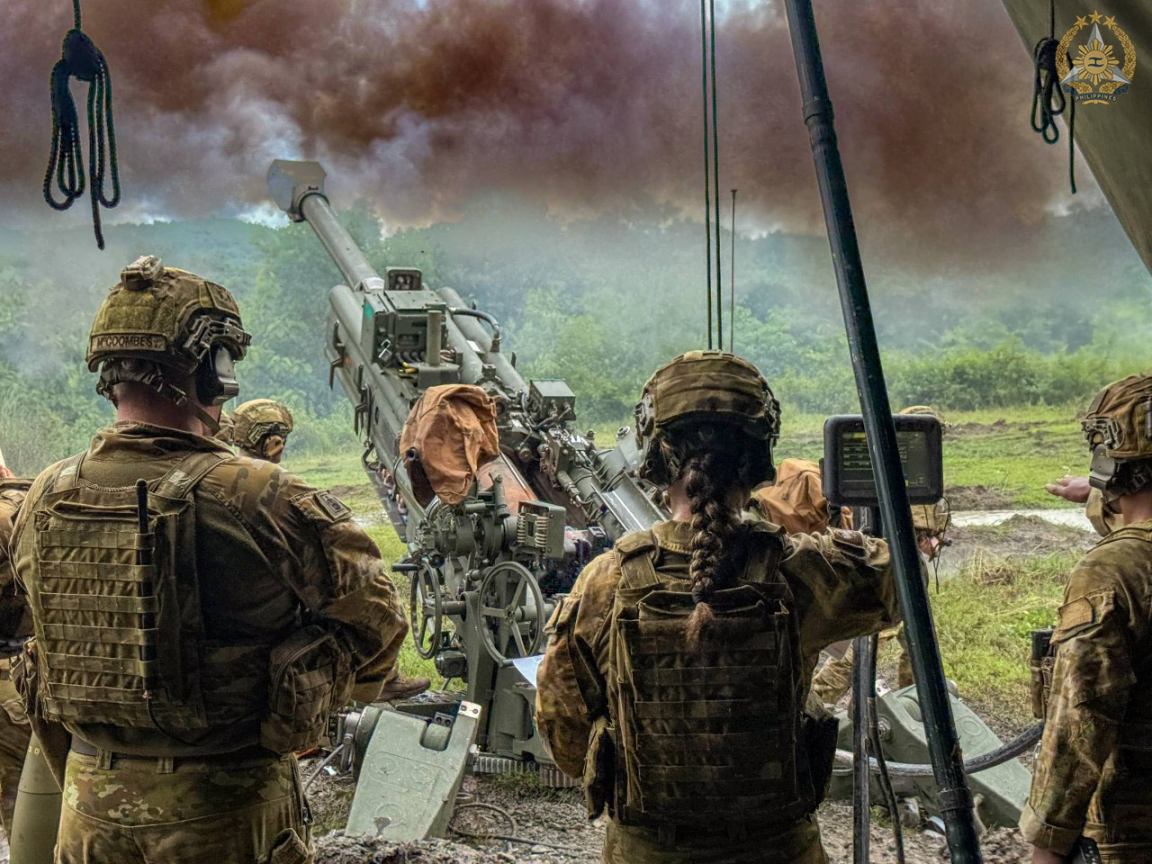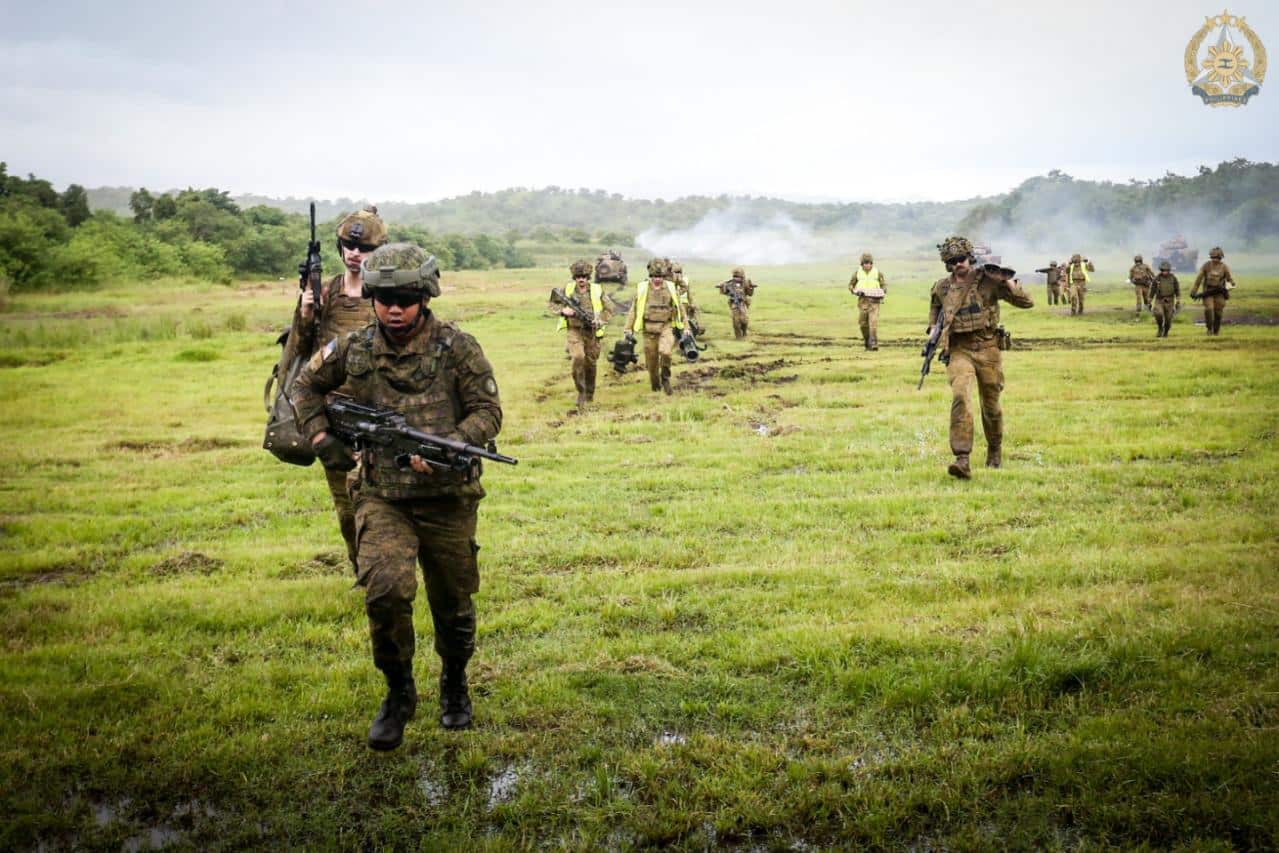PH, Australian troops stage live-fire drill in Nueva Ecija

Australian Army personnel fire the M777A2 155mm howitzer during the Philippine-Australia Exercise Alon 2025 Combined Live Fire Exercise at Fort Magsaysay, Nueva Ecija, on Wednesday, August 27, 2025. — Photo from Philippine Air Force/Armed Forces of the Philippines Public Affairs Office
MANILA, Philippines — Philippine and Australian troops staged a combined arms live-fire drill on Wednesday as part of “Exercise Amphibious and Land Operations” (Alon) 2025, the largest and most complex iteration of the bilateral defense exercise since its launch in 2023, underscoring their deepening security ties amid tensions in the West Philippine Sea.
The exercise unfolded at Fort Magsaysay in Laur, Nueva Ecija, where both forces integrated land and air combat capabilities in a simulated battlefield scenario. The live-fire training was conducted at Fire Base in Barangay Canantong, about 11 kilometers from the forward operating area.
Lt. Gen. Antonio G. Nafarrete, commanding general of the Philippine Army, said the drill capped the land phase of Exercise Alon and tested the integration of fire support from both armies under realistic conditions.
“Even in bad weather or in actual combat, these systems can fire effectively. What we are really working on here is interoperability — how to plan and execute joint scenarios with our Australian counterparts,” Nafarrete told reporters. He noted that while the two militaries use different equipment, the training emphasized command-and-control, communications, and combat readiness.
READ: PH, Australia start ‘Exercise Alon’ with US, Canadian observers
Among the Philippine assets deployed were the Army Artillery Regiment’s ATMOS 155mm self-propelled howitzers, 105mm howitzers, A-29 Super Tucano attack aircraft, Navy and Air Force AW-109 helicopters, and the T-129 ATAK helicopter gunship. The ATMOS units fired live rounds during the drill, demonstrating the Army’s long-range precision strike capability.
The Australian Defence Force (ADF) fielded its 155mm M777 howitzers, 81mm mortars, EF88 Steyr rifles, Minimi light machine guns, MK47 grenade launchers, FGM-148 Javelin anti-tank systems, sniper systems, and heavy machine guns. The M777s also fired as part of the exercise, providing synchronized artillery support with their Philippine counterparts. Royal Australian Air Force FA-18F Super Hornet fighter jets provided additional air support.
Lt. Gen. Arthur Cordura, commanding general of the Philippine Air Force, explained that some aerial maneuvers were aborted due to safety considerations, though the aircraft were fully capable of operating in adverse weather.
“Our pilots are trained and our platforms are designed to perform combat maneuvers and deliver munitions even during inclement weather. For this exercise, the pilot decided to abort the live fire in the interest of safety, but in real-world conditions these systems can deliver,” Cordura said.
He added that the exercise ties into the military’s Comprehensive Archipelagic Defense Concept, which envisions projecting forces across the country’s 200-nautical-mile exclusive economic zone.
“That is actually the essence of our comprehensive archipelagic defense concept. To allow the major services to have this initiative, to have this ingenuity and the cognizance that we need to project forces and operate within the 220th EZ,” Cordura said.

Philippine and Australian troops move out after completing the combined live-fire exercise under Philippine–Australia Exercise Alon 2025 at Fort Magsaysay, Nueva Ecija, on Wednesday, August 27, 2025. — Photo from Armed Forces of the Philippines Public Affairs Office
Lt. Col. Andrew Raven, commanding officer of the 8th/9th Battalion, The Royal Australian Regiment, and commander of Battlegroup Ram, highlighted the deployment’s significance, calling it the largest airlift of Australian combat forces since the 1999 East Timor mission.
“This shows we can deploy a combat-ready and combat-capable force within the Indo-Pacific to assist a security partner such as the Philippines,” Raven said. He noted that the Australian Army’s history of combat experience, most recently in Afghanistan and Iraq, underpins its readiness.
The Armed Forces of the Philippines said it contributed not only artillery and ground forces but also 14 aircraft and around 160 personnel across different phases of the drill.
Nafarrete added that the military was also sharpening cyber, communications, and command-and-control capabilities “so that we speak the same language with like-minded nations such as the Australian Defence Force.”
Meanwhile, naval forces from the Philippines, Australia, and Canada concluded a multilateral exercise east of Bajo de Masinloc.
Warships BRP Jose Rizal (FF150), HMAS Brisbane (DDG41), and HMCS Ville de Québec (FFH332) conducted an air defense exercise to counter simulated aerial threats and a photo exercise showcasing precision formation sailing. /das


















